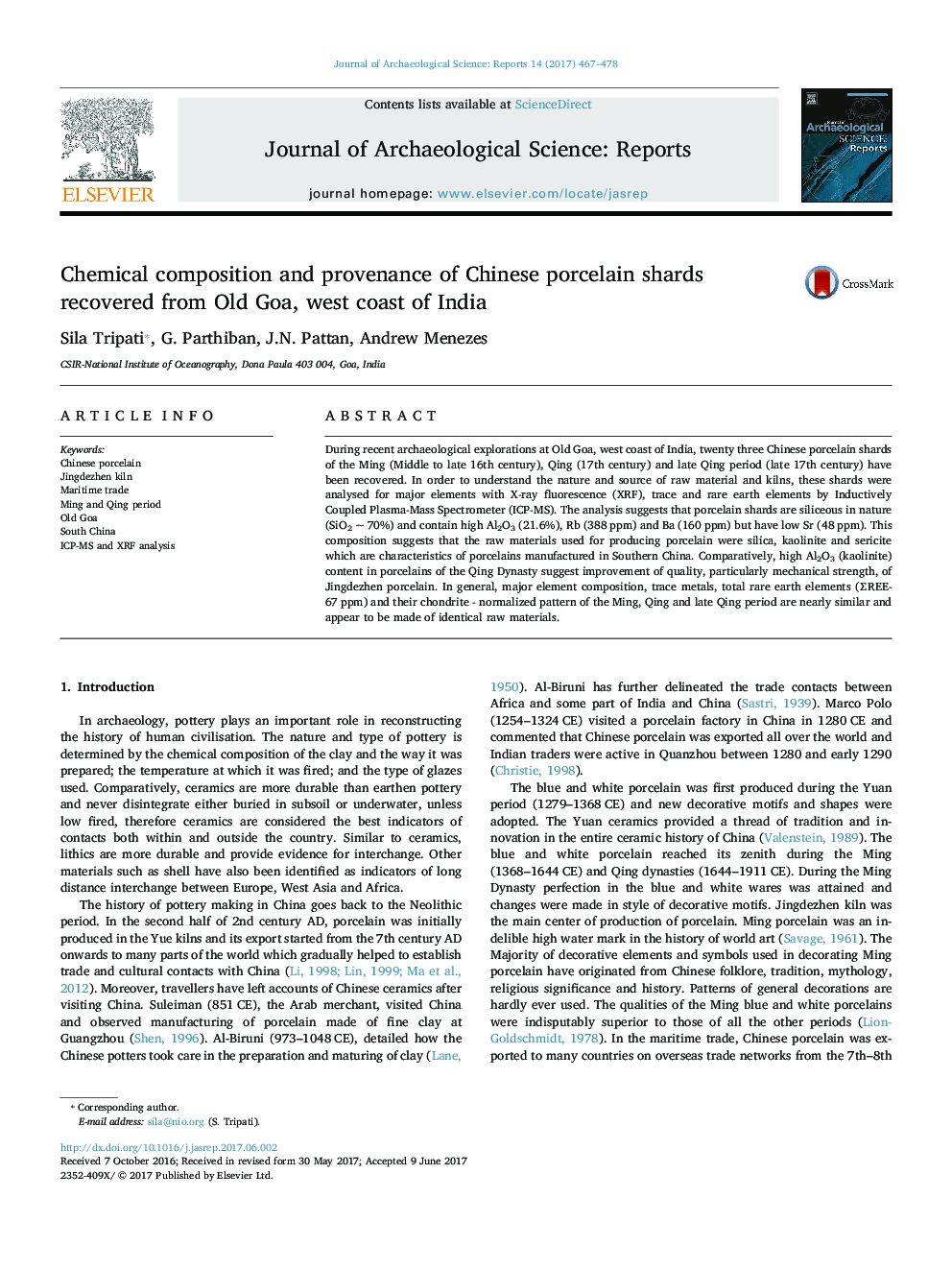| کد مقاله | کد نشریه | سال انتشار | مقاله انگلیسی | نسخه تمام متن |
|---|---|---|---|---|
| 5112359 | 1483929 | 2017 | 12 صفحه PDF | دانلود رایگان |
عنوان انگلیسی مقاله ISI
Chemical composition and provenance of Chinese porcelain shards recovered from Old Goa, west coast of India
ترجمه فارسی عنوان
ترکیب شیمیایی و پروتئین شربت چینی از قدیمی گوا، ساحل غربی هند، بهبود یافت
دانلود مقاله + سفارش ترجمه
دانلود مقاله ISI انگلیسی
رایگان برای ایرانیان
موضوعات مرتبط
علوم انسانی و اجتماعی
علوم انسانی و هنر
تاریخ
چکیده انگلیسی
During recent archaeological explorations at Old Goa, west coast of India, twenty three Chinese porcelain shards of the Ming (Middle to late 16th century), Qing (17th century) and late Qing period (late 17th century) have been recovered. In order to understand the nature and source of raw material and kilns, these shards were analysed for major elements with X-ray fluorescence (XRF), trace and rare earth elements by Inductively Coupled Plasma-Mass Spectrometer (ICP-MS). The analysis suggests that porcelain shards are siliceous in nature (SiO2 ~ 70%) and contain high Al2O3 (21.6%), Rb (388 ppm) and Ba (160 ppm) but have low Sr (48 ppm). This composition suggests that the raw materials used for producing porcelain were silica, kaolinite and sericite which are characteristics of porcelains manufactured in Southern China. Comparatively, high Al2O3 (kaolinite) content in porcelains of the Qing Dynasty suggest improvement of quality, particularly mechanical strength, of Jingdezhen porcelain. In general, major element composition, trace metals, total rare earth elements (â REE-67 ppm) and their chondrite - normalized pattern of the Ming, Qing and late Qing period are nearly similar and appear to be made of identical raw materials.
ناشر
Database: Elsevier - ScienceDirect (ساینس دایرکت)
Journal: Journal of Archaeological Science: Reports - Volume 14, August 2017, Pages 467-478
Journal: Journal of Archaeological Science: Reports - Volume 14, August 2017, Pages 467-478
نویسندگان
Sila Tripati, G. Parthiban, J.N. Pattan, Andrew Menezes,
